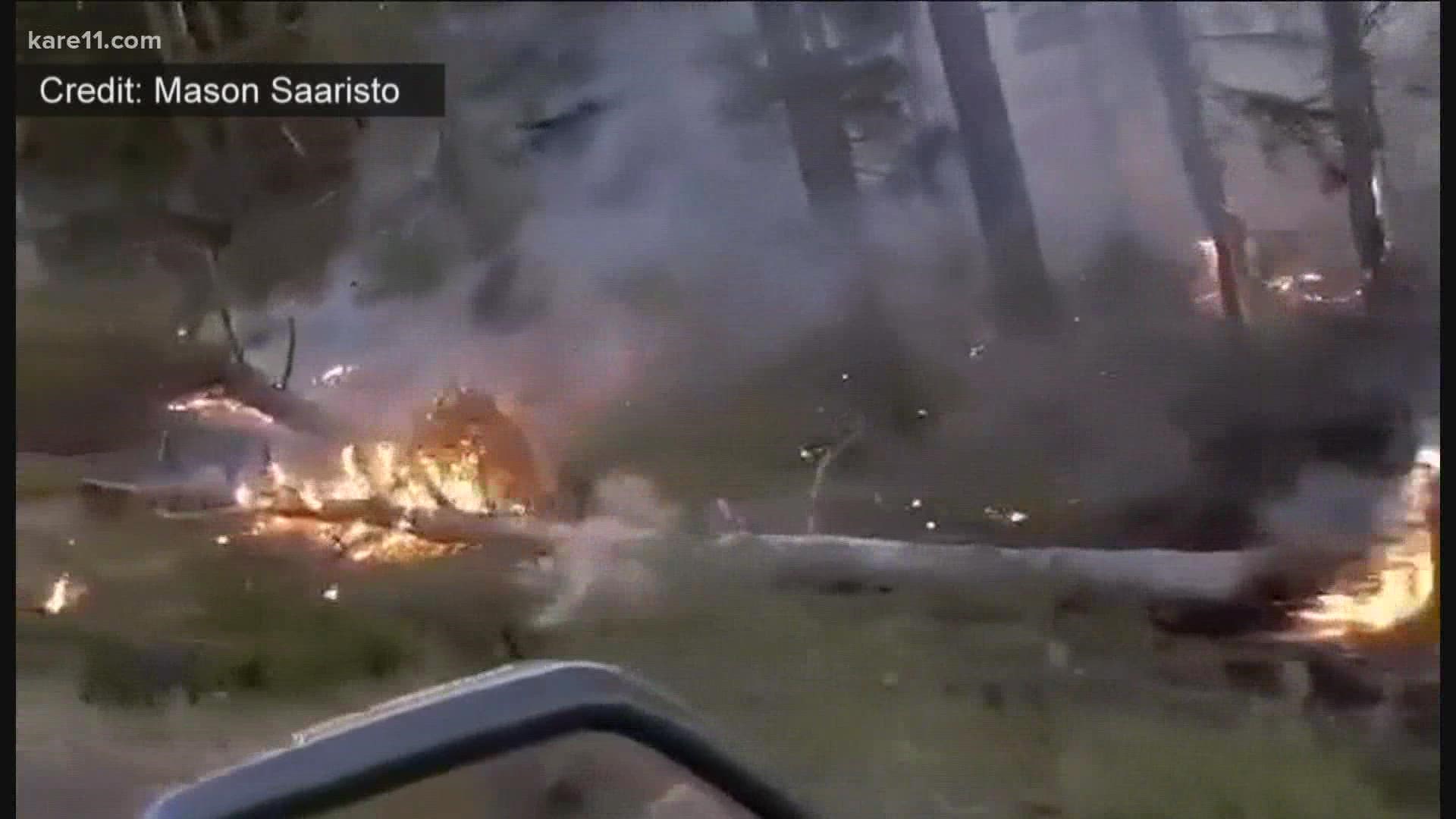ISABELLA, Minn. — A turn in the weather was just what fire crews needed to slow the Greenwood wildfire a bit.
The U.S. Forest Service (USFS)-Superior National Forest reported Wednesday that the wildfire burning in northeastern Minnesota near Isabella now covers 21,720 acres, an increase of just over 2,000 acres from Tuesday. It was a victory to see the fire slow, after it doubled in size between Monday and Tuesday.
An update posted to the USFS incident page credits more cloud cover, cooler temps and increased humidity for helping to moderate the wildfire's fire behavior and growth. Crews are digging in Wednesday to establish stronger fire lines on the eastern and southern edges of the blaze, which started Aug. 15 in the Laurentian Ranger District about 15 miles southwest of Isabella.
Other firefighters are conducting defensive burn operations on major edges of the Greenwood Fire to reduce natural fuels near homes and cabins, or established fire lines. They will be supported by water-dropping aircraft, bulldozers and heavy equipment crews.
The forecast for Wednesday calls for lighter winds out of the northwest, lower temps and humidity levels nearing 40%.
USFS spokesman Clark McCreedy says currently seven hand crews of 20 firefighters apiece (140 firefighters) are on the ground, with another two crews en route. He says safe access routes into the McDougal Lake area have been completed, and fire personnel will be surveying the area to see how many structures were lost, if any, when the wildfire jumped on Monday.
McCreedy talked about the change in weather as a welcome development, but said the biggest win so far was getting crews and equipment out safe when the fire turned aggressive and threatened to overrun the operation. He described listening to radio transmissions between crews, quick, reactive communication that allowed everyone to escape the rapidly-advancing flames without losing people or equipment.
"A wonderfully well-coordinated effort," he said with obvious pride as a veteran firefighter. "Gentlemen, my hats off to you, because you did a spectacular job getting people out of harm's way."
McCreedy says the Greenwood fire is unique due to the collision of factors that have created an environment ripe for wildfire, including abnormally dry conditions due to prolonged drought, and a run of moderate winters that did not kill off a pest known as the Spruce Bud Worm. Those worms have infested and killed a large number of spruce trees in the Superior National Forest, adding even more natural fuel to the proverbial fire.

